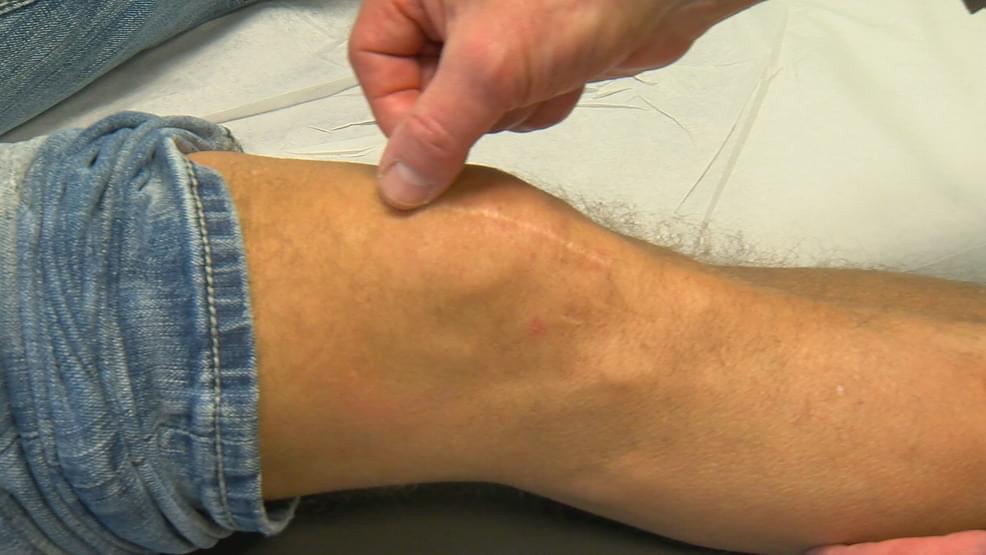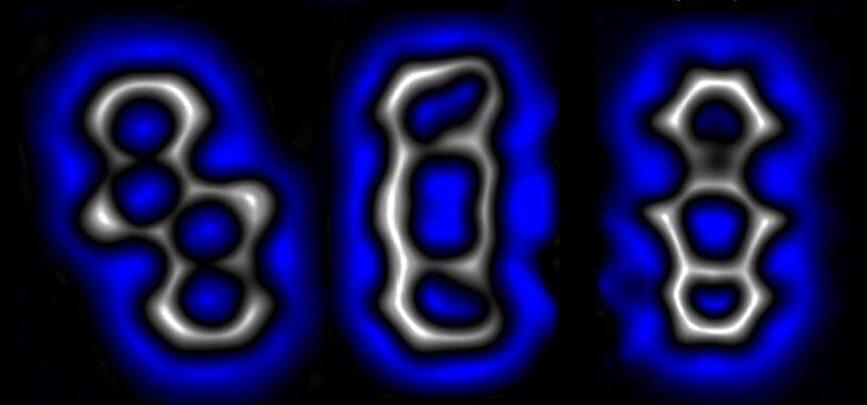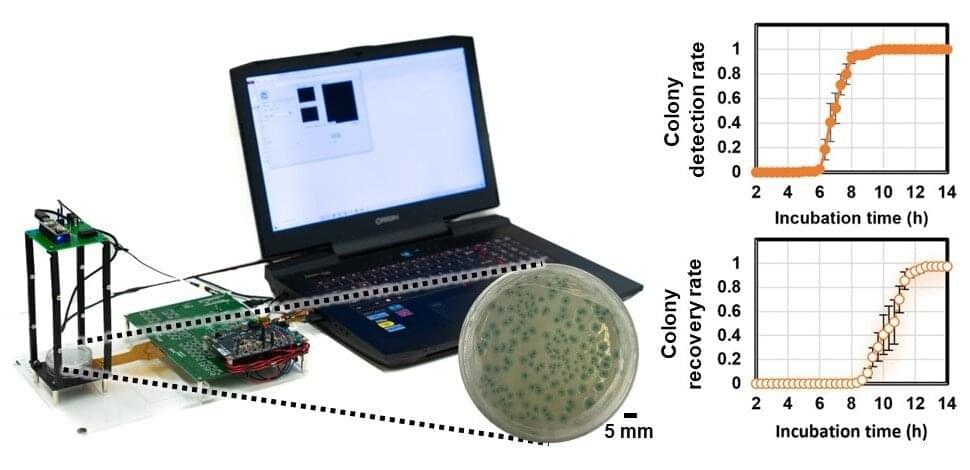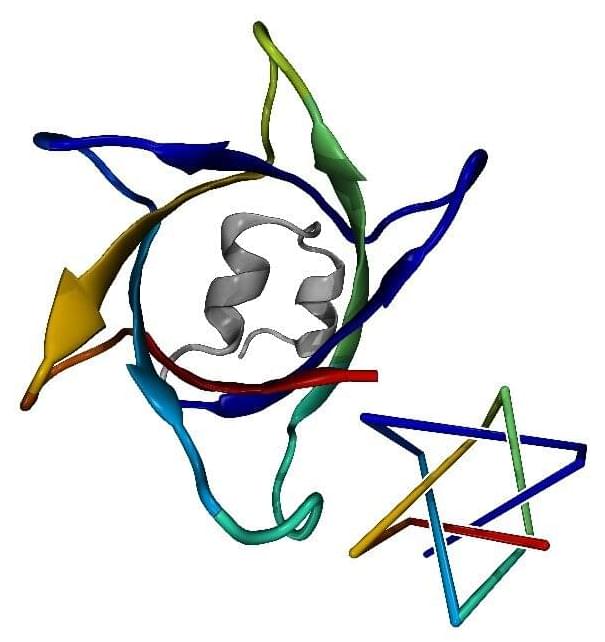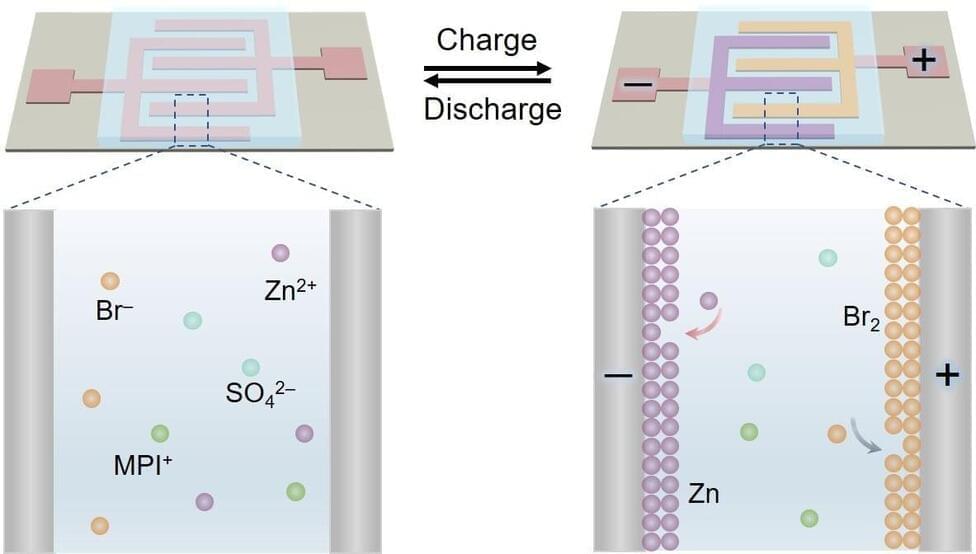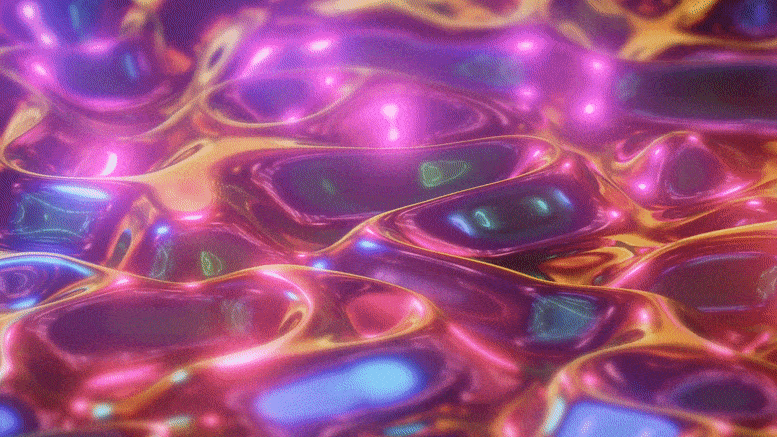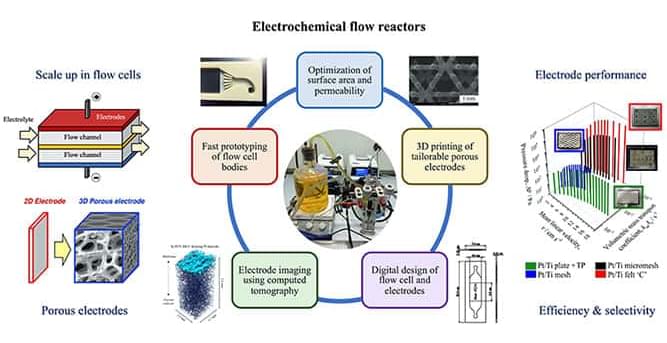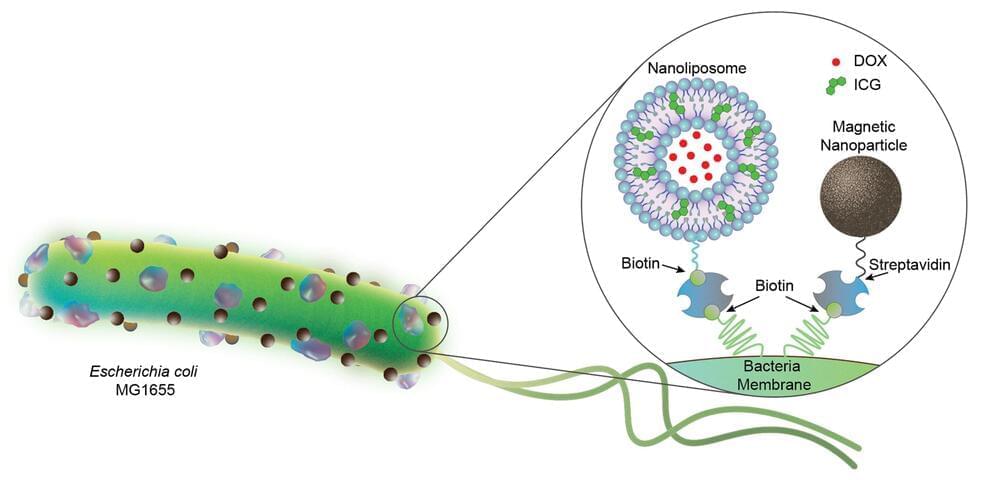Archive for the ‘chemistry’ category: Page 188
Jul 18, 2022
Chemists Just Rearranged Atomic Bonds in a Single Molecule For The First Time
Posted by Heather Blevins in categories: chemistry, engineering, particle physics, transportation
So precise.
If chemists built cars, they’d fill a factory with car parts, set it on fire, and sift from the ashes pieces that now looked vaguely car-like.
When you’re dealing with car-parts the size of atoms, this is a perfectly reasonable process. Yet chemists yearn for ways to reduce the waste and make reactions far more precise.
Continue reading “Chemists Just Rearranged Atomic Bonds in a Single Molecule For The First Time” »
Jul 17, 2022
Deep learning accelerates the detection of live bacteria using thin-film transistor arrays
Posted by Saúl Morales Rodriguéz in categories: chemistry, economics, food, health, mobile phones, robotics/AI
Early detection and identification of pathogenic bacteria in food and water samples are essential to public health. Bacterial infections cause millions of deaths worldwide and bring a heavy economic burden, costing more than 4 billion dollars annually in the United States alone. Among pathogenic bacteria, Escherichia coli (E. coli) and other coliform bacteria are among the most common ones, and they indicate fecal contamination in food and water samples. The most conventional and frequently used method for detecting these bacteria involves culturing of the samples, which usually takes 24 hours for the final read-out and needs expert visual examination. Although some methods based on, for example, the amplification of nucleic acids, can reduce the detection time to a few hours, they cannot differentiate live and dead bacteria and present low sensitivity at low concentrations of bacteria. That is why the U.S. Environmental Protection Agency (EPA) approves no nucleic acid-based bacteria sensing method for screening water samples.
In an article recently published in ACS Photonics, a journal of the American Chemical Society (ACS), a team of scientists, led by Professor Aydogan Ozcan from the Electrical and Computer Engineering Department at the University of California, Los Angeles (UCLA), and co-workers have developed an AI-powered smart bacterial colony detection system using a thin-film transistor (TFT) array, which is a widely used technology in mobile phones and other displays.
The ultra-large imaging area of the TFT array (27 mm × 26 mm) manufactured by researchers at Japan Display Inc. enabled the system to rapidly capture the growth patterns of bacterial colonies without the need for scanning, which significantly simplified both the hardware and software design. This system achieved ~12-hour time savings compared to gold-standard culture-based methods approved by EPA. By analyzing the microscopic images captured by the TFT array as a function of time, the AI-based system could rapidly and automatically detect colony growth with a deep neural network. Following the detection of each colony, a second neural network is used to classify the bacteria species.
Jul 16, 2022
Physicists use AI to find the most complex protein knots so far
Posted by Shubham Ghosh Roy in categories: biotech/medical, chemistry, nanotechnology, robotics/AI
The question of how the chemical composition of a protein—the amino acid sequence—determines its 3D structure has been one of the biggest challenges in biophysics for more than half a century. This knowledge about the so-called “folding” of proteins is in great demand, as it contributes significantly to the understanding of various diseases and their treatment, among other things. For these reasons, Google’s DeepMind research team has developed AlphaFold, an artificial intelligence that predicts 3D structures.
A team consisting of researchers from Johannes Gutenberg University Mainz (JGU) and the University of California, Los Angeles, has now taken a closer look at these structures and examined them with respect to knots. We know knots primarily from shoelaces and cables, but they also occur on the nanoscale in our cells. Knotted proteins can not only be used to assess the quality of structure predictions but also raise important questions about folding mechanisms and the evolution of proteins.
Jul 16, 2022
Chemists change the bonds between atoms in a single molecule for the first time
Posted by Saúl Morales Rodriguéz in categories: chemistry, particle physics
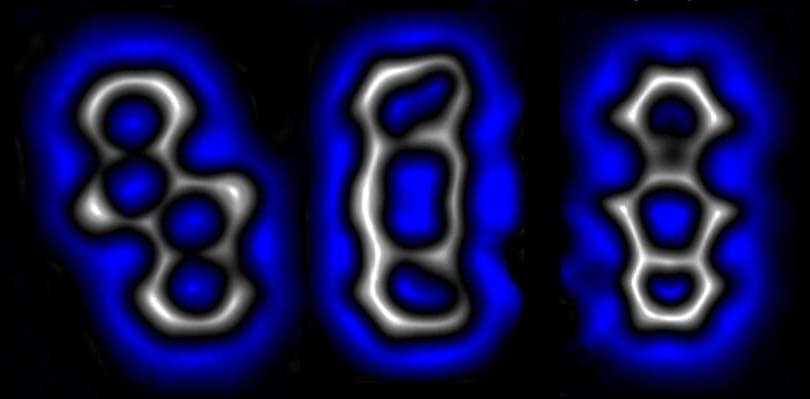
A team of researchers from IBM Research Europe, Universidade de Santiago de Compostela and the University of Regensburg has changed the bonds between the atoms in a single molecule for the first time. In their paper published in the journal Science, the group describes their method and possible uses for it. Igor Alabugin and Chaowei Hu, have published a Perspective piece in the same journal issue outlining the work done by the team.
The current method for creating complex molecules or molecular devices, as Alagugin and Chaowei note, is generally quite challenging—they liken it to dumping a box of Legos in a washing machine and hoping that some useful connections are made. In this new effort, the research team has made such work considerably easier by using a scanning tunneling microscope (STM) to break the bonds in a molecule and then to customize the molecule by creating new bonds—a chemistry first.
Continue reading “Chemists change the bonds between atoms in a single molecule for the first time” »
Jul 16, 2022
Researchers propose dual-plating strategy to rapidly construct microbatteries
Posted by Saúl Morales Rodriguéz in categories: biotech/medical, chemistry, internet
High-performance, micro-sized electrochemical energy storage devices are essential for future miniaturized electronic devices, such as smart medical implants, wireless sensors, and the Internet of Things. Microbatteries (MBs) typically show higher energy density and more stable voltage output than micro-supercapacitors.
However, current MBs involve tedious construction procedures and unsatisfactory electrochemical performance. In addition, no methods exist to construct or manipulate a liquid microelectrode.
A joint research team led by Prof. Qu Liangti from Tsinghua University, Prof. Zhang Zhipan from the Beijing Institute of Technology, and Prof. Liu Feng from the Institute of Mechanics of the Chinese Academy of Sciences (IMCAS) recently proposed a dual-plating strategy to rapidly construct new zinc–bromine microbatteries (Zn–Br2 MBs) with ultrahigh areal energy density and polarity-switchable functionality.
Jul 16, 2022
MIT Professor Wins European Inventor Award for Liquid Metal Batteries
Posted by Saúl Morales Rodriguéz in categories: chemistry, energy, sustainability
For his work on liquid metal batteries that could enable the long-term storage of renewable energy, MIT Professor Donald Sadoway has won the 2022 European Inventor Award, in the category for Non-European Patent Office Countries.
Sadoway is a longtime supporter and friend of MIT’s Materials Research Laboratory and is the John F. Elliott Professor of Materials Chemistry in MIT’s Department of Materials Science and Engineering.
“By enabling the large-scale storage of renewable energy, Donald Sadoway’s invention is a huge step towards the deployment of carbon-free electricity generation,” says António Campinos, President of the European Patent Office. “He has spent his career studying electrochemistry and has transformed this expertise into an invention that represents a huge step forward in the transition to green energy.”
Jul 16, 2022
MIT’s Raman Lab: At the Forefront of Building With Biology
Posted by Jose Ruben Rodriguez Fuentes in categories: biotech/medical, chemistry, engineering

Ritu Raman leads the Raman Lab, where she creates adaptive biological materials for applications in medicine and machines.
It seems that Ritu Raman was born with an aptitude for engineering. You may say it is in her blood since her mother is a chemical engineer, her father is a mechanical engineer, and her grandfather is a civil engineer. Throughout her childhood, she repeatedly witnessed firsthand the beneficial impact that engineering careers could have on communities. In fact, watching her parents build communication towers to connect the rural villages of Kenya to the global infrastructure is one of her earliest memories. She still vividly remembers the excitement she felt watching the emergence of a physical manifestation of innovation that would have a long-lasting positive impact on the community.
Continue reading “MIT’s Raman Lab: At the Forefront of Building With Biology” »
Jul 16, 2022
Flow cells: advanced electrodes via 3D printing and tomography
Posted by Shubham Ghosh Roy in categories: 3D printing, chemistry
Join the audience for a live webinar on 20 July 2022 sponsored by TA Instruments – Waters, Hiden Analytical and Royal Society of Chemistry, in partnership with The Electrochemical Society.
Jul 15, 2022
Bacteria-based biohybrid microrobots on a mission to one day battle cancer
Posted by Saúl Morales Rodriguéz in categories: biotech/medical, chemistry, nanotechnology, robotics/AI
A team of scientists in the Physical Intelligence Department at the Max Planck Institute for Intelligent Systems have combined robotics with biology by equipping E. coli bacteria with artificial components to construct biohybrid microrobots. First, as can be seen in Figure 1, the team attached several nanoliposomes to each bacterium. On their outer circle, these spherical-shaped carriers enclose a material (ICG, green particles) that melts when illuminated by near infrared light. Further towards the middle, inside the aqueous core, the liposomes encapsulate water soluble chemotherapeutic drug molecules (DOX).
The second component the researchers attached to the bacterium is magnetic nanoparticles. When exposed to a magnetic field, the iron oxide particles serve as an on-top booster to this already highly motile microorganism. In this way, it is easier to control the swimming of bacteria —an improved design toward an in vivo application. Meanwhile, the rope binding the liposomes and magnetic particles to the bacterium is a very stable and hard to break streptavidin and biotin complex, which was developed a few years prior and reported in a Nature article, and comes in useful when constructing biohybrid microrobots.
E. coli bacteria are fast and versatile swimmers that can navigate through material ranging from liquids to highly viscous tissues. But that is not all, they also have highly advanced sensing capabilities. Bacteria are drawn to chemical gradients such as low oxygen levels or high acidity—both prevalent near tumor tissue. Treating cancer by injecting bacteria in proximity is known as bacteria mediated tumor therapy. The microorganisms flow to where the tumor is located, grow there and in this way activate the immune system of patients. Bacteria mediated tumor therapy has been a therapeutic approach for more than a century.
